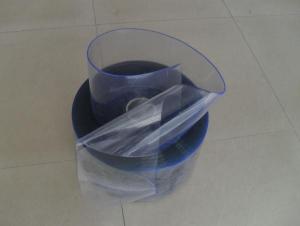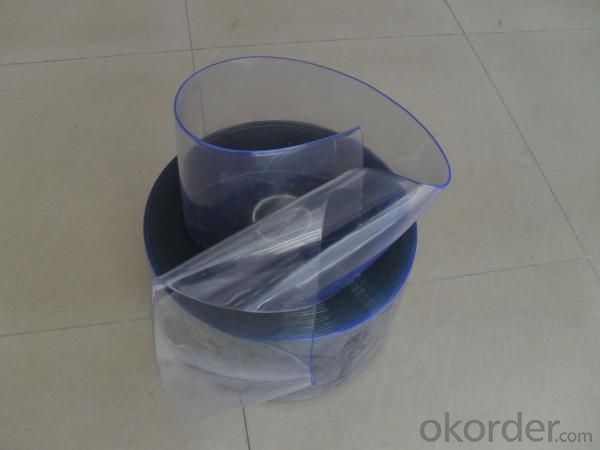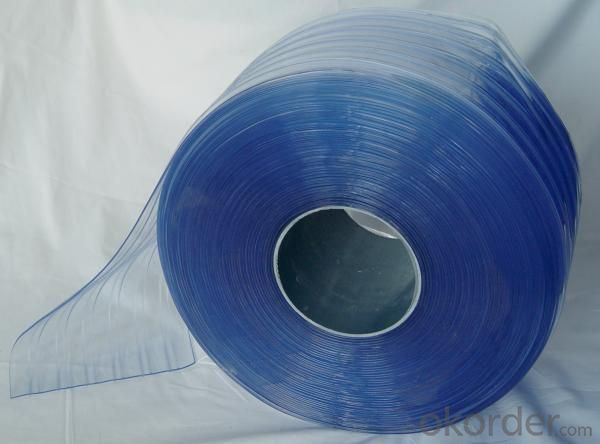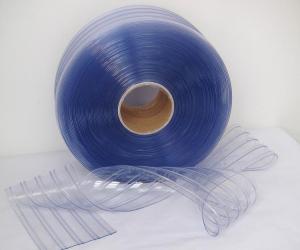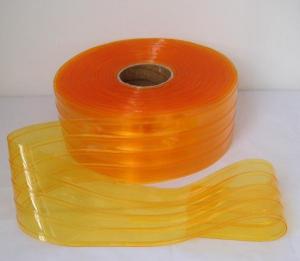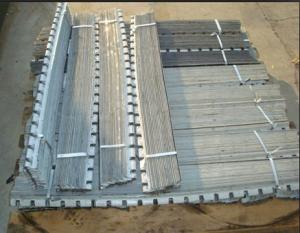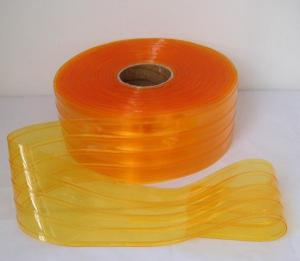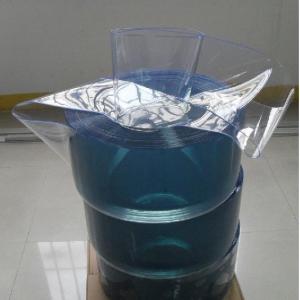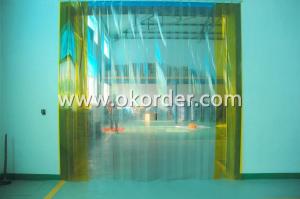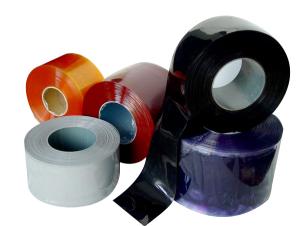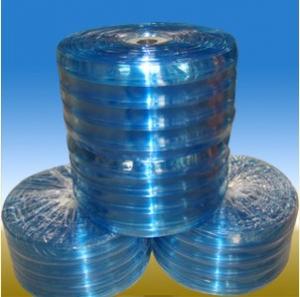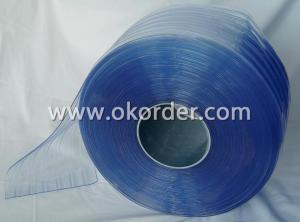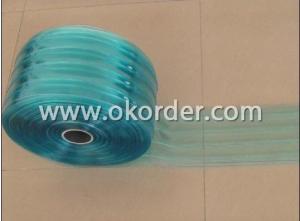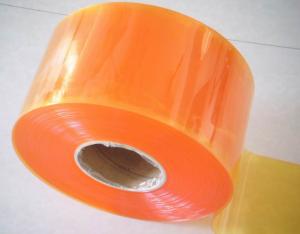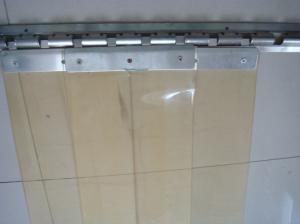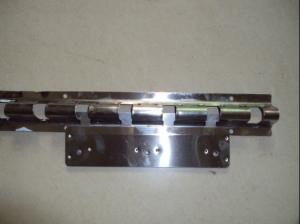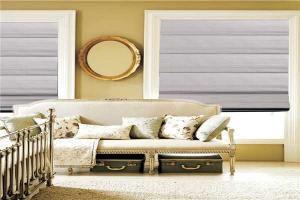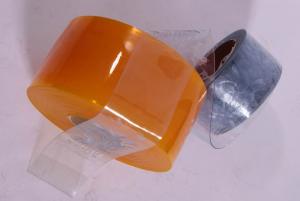PVC Strip Curtain with High Quality Normal Tempt Grade
- Loading Port:
- China Main Port
- Payment Terms:
- TT or L/C
- Min Order Qty:
- 10 Rolls roll
- Supply Capability:
- 10 Containers Per Month roll/month
OKorder Service Pledge
OKorder Financial Service
You Might Also Like
Specifications of High Quality Normal Temperature Grade PVC Strip Curtains
Application tempt range: -15℃to 50℃
Thickness range from 1.5mm to 6mm
Width range from 150mm to 400mm
Standard Sizes
2mmX200mmX50m; 2mmX300mmX50m;
3mmX200mmX50m; 3mmX300mmX50m;3mmX400mmX50m
4mmX300mmX50m; 4mmX400mmX50m
Applications of High Quality Normal Temperature Grade PVC Strip Curtains
(1)Very Light Duty
sed in areas with very light pedestrian traffic or fragile goods, and light industrial doorways.
Light Duty, Pedestrian and pallet trolley access, for wind and dust exclusion areas. Commonly used in food processing industries and for internal wall and doorway separation.
(2)Medium Duty
used in outdoor or indoor conditions where requiring contamination exclusion. Pallet trolleys, light fork lift and pedestrian use.
(3)Heavy Duty
outdoor or indoor conditions requiring significant weather/environmental exclusion and heavy/frequent pedestrian and fork lift traffic
Package& Delivery of High Quality Normal Temperature Grade PVC Strip Curtains
Wooden pallet,shirnk film according to custom requires.
Types of High Quality Normal Temperature Grade PVC Strip Curtains
Normal Grade PVC strip rolls comes in shape of Smooth and Ribbed,brillantly trandsparent and clear,these are useful for -20℃to +50℃temperature applications.
(1) Smooth PVC strip rolls:
Smooth PVC strips are flat shape,brilliantly transparent and clear,it is available in clear transparent,non viscidity and wide color selections.
(2)Ribbed PVC strip rolls:
the unique rib design of these strips let the rib portion take the impact of truck and forklift traffic.this prevents scratching as well as grease and grime building up ,the unique rib design keeps the strips cleaner,and becomes long lasting.
Please refer to our products page or ask for our CNBM's PRODUCTS GENERAL STANDARDS COMPARISON TABLE
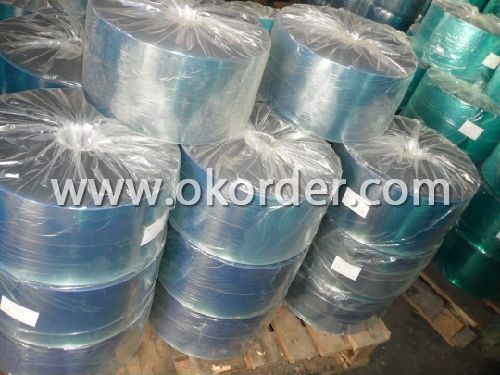
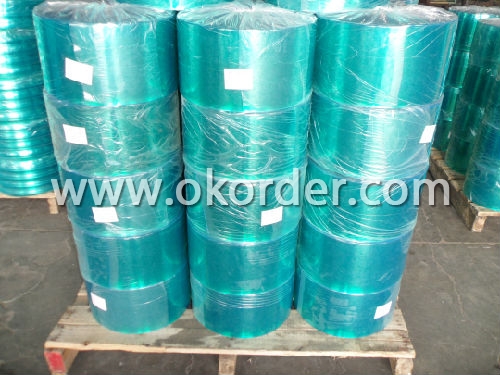
- Q: Can home appliance plastics be customized or personalized?
- Yes, home appliance plastics can be customized or personalized. Manufacturers often offer options for customers to select different colors, finishes, or even add custom designs to their appliances. This allows consumers to match their personal style or the aesthetic of their home. Additionally, some companies may offer personalized engravings or labels on the appliance, further enhancing the customization options.
- Q: Are there any specific disposal guidelines for plastic parts from home appliances?
- Yes, there are specific disposal guidelines for plastic parts from home appliances. It is recommended to separate the plastic parts from other components and dispose of them in recycling bins or centers. Many localities have recycling programs that accept plastic materials, including those from appliances. It is important to check with your local waste management authorities or recycling facilities to ensure proper disposal according to the guidelines in your area.
- Q: What are the most common types of plastic used in home appliances?
- The most common types of plastic used in home appliances include polypropylene (PP), polyethylene (PE), polystyrene (PS), and acrylonitrile butadiene styrene (ABS).
- Q: Can home appliance plastics be easily cleaned and maintained?
- Yes, home appliance plastics can be easily cleaned and maintained. Most home appliance plastics are designed to be durable and resistant to common household stains and spills. They can usually be wiped clean with a damp cloth or sponge and mild detergent. Regular maintenance, such as dusting and removing any debris, can help prolong their lifespan and keep them looking new.
- Q: Can plastic parts in home appliances be affected by exposure to extreme weather conditions?
- Yes, plastic parts in home appliances can be affected by exposure to extreme weather conditions. Extreme heat or cold temperatures can cause the plastic to warp, crack, or become brittle. Additionally, exposure to excessive sunlight or UV radiation can lead to color fading or degradation of the plastic material over time.
- Q: Can plastic parts in home appliances be painted or coated with other materials?
- Yes, plastic parts in home appliances can be painted or coated with other materials.
- Q: How does plastic contribute to the safety of home appliances?
- Plastic contributes to the safety of home appliances by providing insulation and protection against electric shocks, heat resistance, and durability. Additionally, plastic components can be designed to be fire-resistant, reducing the risk of fires caused by electrical malfunctions.
- Q: What glue can glue PP plastic?
- Adhesion, align the PP plastic bonding parts to the titanium alloy and direct bonding without any external force. Note: if the material is heavier, the material will be assisted or positioned to prevent deformation of the joint due to gravity. Hope to help you.
- Q: How does the quality of plastic used in home appliances affect their lifespan?
- The quality of plastic used in home appliances directly affects their lifespan. High-quality plastic, such as durable and heat-resistant materials, can significantly increase the longevity of the appliance. It ensures that the appliance can withstand regular use, resist wear and tear, and endure high temperatures without cracking or breaking. On the other hand, low-quality plastic is more prone to degradation, becoming brittle or discolored over time. This can lead to premature failure, reducing the overall lifespan of the appliance.
- Q: Can plastic and leather be double adhesive?
- Plastic and leather can be bonded with HY-T160 glue.HY-T160 PP/PE slow dry glue is mainly used for bonding plastic products such as: stick to polyethylene (PE), polypropylene (PP), polyvinyl chloride (PVC), ABS, nylon, sponge, foam film, etc.; the organic glass, rubber, metal, wood, bamboo fabric paper also has good adhesion, especially for plastic and metal and non-metal materials are glued cross bonding has more originality, is the bonding material industry, household appliances industry, radio decoration, craft toys, insulation materials, packaging and printing industry is the ideal.
1. Manufacturer Overview
| Location | Hebei, China |
| Year Established | 1991 |
| Annual Output Value | US$ 1 Million - US$ 2.5 Million |
| Main Markets | 40.00% Southeast Asia 15.00% Mid East 10.00% South America 5.00% Southern Europe 5.00% Northern Europe 5.00% Western Europe 5.00% Oceania 5.00% Africa 5.00% Eastern Europe 5.00% North America |
| Company Certifications | ISO 9001:2000; |
2. Manufacturer Certificates
| a) Certification Name | |
| Range | |
| Reference | |
| Validity Period |
3. Manufacturer Capability
| a) Trade Capacity | |
| Nearest Port | Tianjin; Qingdao |
| Export Percentage | 81% - 90% |
| No.of Employees in Trade Department | 6-10 People |
| Language Spoken: | English; Chinese |
| b) Factory Information | |
| Factory Size: | Above 40,000 square meters |
| No. of Production Lines | Above 10 |
| Contract Manufacturing | OEM Service Offered; Design Service Offered |
| Product Price Range | High; Average |
Send your message to us
PVC Strip Curtain with High Quality Normal Tempt Grade
- Loading Port:
- China Main Port
- Payment Terms:
- TT or L/C
- Min Order Qty:
- 10 Rolls roll
- Supply Capability:
- 10 Containers Per Month roll/month
OKorder Service Pledge
OKorder Financial Service
Similar products
Hot products
Hot Searches
